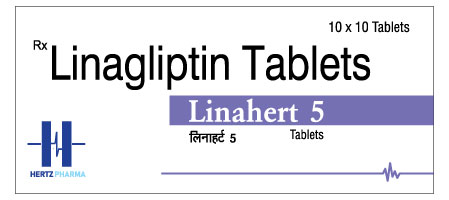
Type 2 diabetes mellitus is a chronic medical condition that affects how the body processes blood sugar (glucose). It is characterized by insulin resistance and insufficient insulin production, leading to high blood sugar levels over time. This condition is one of the most common forms of diabetes, affecting millions of people worldwide. Understanding its causes, symptoms, and treatment options is essential for managing and preventing complications.
Type 2 diabetes occurs when the body’s cells become resistant to the action of insulin, a hormone produced by the pancreas that helps regulate blood sugar. Additionally, the pancreas may not produce enough insulin to meet the body’s needs. This results in elevated blood sugar levels, which can damage various organs and tissues over time.
While type 2 diabetes was once referred to as adult-onset diabetes, it is increasingly being diagnosed in younger individuals due to lifestyle changes, obesity, and sedentary habits.
Several factors contribute to the development of type 2 diabetes, including:
-
Genetics: A family history of diabetes increases the likelihood of developing the condition.
-
Lifestyle Factors: Unhealthy eating habits, lack of physical activity, and obesity are significant contributors.
-
Age: The risk of type 2 diabetes increases with age, particularly after 45.
-
Ethnicity: Some ethnic groups, such as South Asians, African Americans, and Hispanics, have a higher predisposition to type 2 diabetes.
-
Gestational Diabetes: Women who had diabetes during pregnancy are at a higher risk of developing type 2 diabetes later in life.
-
Metabolic Syndrome: Conditions such as high blood pressure, high cholesterol, and excess abdominal fat often co-exist and contribute to insulin resistance.
The symptoms of type 2 diabetes can develop gradually and may go unnoticed for years. Common symptoms include:
-
Increased Thirst and Hunger: High blood sugar levels can lead to dehydration and frequent urination, which intensify thirst and hunger.
-
Frequent Urination: The kidneys work harder to filter excess glucose, resulting in frequent urination.
-
Fatigue: Inability to use glucose effectively for energy can cause persistent tiredness.
-
Blurred Vision: High glucose levels can affect the lenses of the eyes, causing vision problems.
-
Slow-Healing Wounds: High blood sugar impairs the body’s natural healing process.
-
Numbness or Tingling in Extremities: Persistent high glucose levels can damage nerves, leading to a sensation of numbness or tingling in the hands and feet.
-
Unexplained Weight Loss: In some cases, the body may start breaking down muscle and fat for energy, leading to weight loss.
Doctors use the following tests to diagnose type 2 diabetes:
-
Fasting Blood Sugar Test: Measures blood glucose levels after an overnight fast.
-
Oral Glucose Tolerance Test (OGTT): Measures blood sugar before and after consuming a sugary drink.
-
Hemoglobin A1c Test: Provides an average blood sugar level over the past 2-3 months.
-
Random Blood Sugar Test: A blood sample taken at any time to assess glucose levels.
Treatment focuses on maintaining blood sugar levels within a healthy range to prevent complications. The primary strategies include lifestyle changes, medication, and regular monitoring.
1. Lifestyle Modifications
-
Healthy Diet: Incorporate whole grains, lean proteins, healthy fats, fruits, and vegetables while limiting sugar and processed foods.
-
Exercise: Regular physical activity, such as walking, swimming, or strength training, improves insulin sensitivity and helps manage weight.
-
Weight Management: Losing even a modest amount of weight can significantly improve blood sugar control.
2. Medications
Medications are prescribed when lifestyle changes alone are insufficient. One such medication is Linahert 5 Tablet (Linagliptin), which belongs to a class of drugs called DPP-4 inhibitors. Linagliptin works by increasing the levels of incretin hormones, which stimulate the release of insulin and reduce glucose production in the liver. This medication is usually taken once daily and is effective in combination with diet and exercise.
Other common types of medications include:
-
Metformin: Reduces glucose production in the liver and improves insulin sensitivity.
-
Sulfonylureas: Stimulate the pancreas to release more insulin.
-
SGLT2 Inhibitors: Help the kidneys remove excess glucose through urine.
-
Insulin Therapy: Required in some cases when the pancreas cannot produce adequate insulin.
3. Regular Monitoring
Frequent monitoring of blood sugar levels helps individuals understand how their diet, activity, and medication impact their glucose levels. This is crucial for preventing hyperglycemia (high blood sugar) or hypoglycemia (low blood sugar).
If left untreated, type 2 diabetes can lead to serious complications, including:
-
Cardiovascular Disease: Increased risk of heart attack and stroke.
-
Kidney Damage: Chronic high blood sugar can cause kidney failure.
-
Eye Problems: Diabetic retinopathy can lead to blindness if untreated.
-
Nerve Damage: Persistent high glucose levels can result in neuropathy.
-
Foot Problems: Poor circulation and nerve damage increase the risk of infections and amputations.
Preventive measures can significantly reduce the risk of developing type 2 diabetes. These include:
-
Maintaining a healthy weight.
-
Eating a balanced diet.
-
Engaging in regular physical activity.
-
Managing stress effectively.
-
Avoiding smoking and excessive alcohol consumption.
Type 2 diabetes is a manageable condition with proper care and lifestyle adjustments. Medications like Linahert 5 Tablet (Linagliptin) play an essential role in controlling blood sugar levels, but they work best in conjunction with a healthy lifestyle. Early diagnosis and consistent management are key to living a full and healthy life while minimizing the risk of complications.





Leave a Reply